Author: Antony Ingram
We know it can sound a bit old-farty to reminisce on relatively small and insignificant details that don’t actually have a huge impact on daily life, especially when in some cases the modern equivalent is meaningfully better in some ways. But damn it all, who doesn’t love a good cathartic grousing now and then?
Certainly not you lot, who filled the comments section of our last piece on 20 old car features we miss, though what became clear is that we’d missed some old car features that plenty of readers used to appreciate too.
While we’re not including the likes of a choke lever or unassisted steering here (there’s missing old features, and then there’s actively seeking out ways to make your life more difficult), you’ll find a few of the more popular suggestions below, along with a few that have come to our attention in the last few years as they’ve disappeared from the very latest vehicles. And as ever, feel free to add your own thoughts in the comments below…
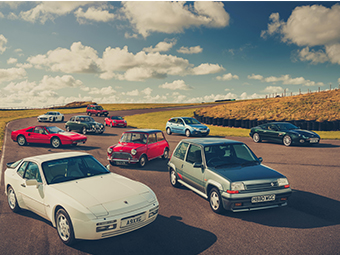

Gear levers
No, not the manual gearbox, though naturally we’ll always be partial to the control and tactility you get with a good manual shift. In this instance though, we’re talking about the lever as an entity, especially in automatic vehicles where even that interface is becoming a thing of the past.
For whatever reason, a prominent shift lever is becoming a thing of the past, replaced instead by buttons, steering column-mounted controls, or a deeply unsatisfying little plastic switch for selecting drive, reverse, neutral and park. The one you get in a Porsche 911 or a VW Golf right now looks more like something you’d use to trim your bikini line than a device for controlling your car.
No longer do you get a tactile clunk moving a lever fore and aft, nor the ability to find the desired control without staring at the centre console to make sure you’re not changing the volume or opening a window or something instead. The action of the switch is little more satisfying than either of those, too. We’d not mind if you got some decent centre console storage in return, but you’re lucky if the resulting space is more than a few inches deep.
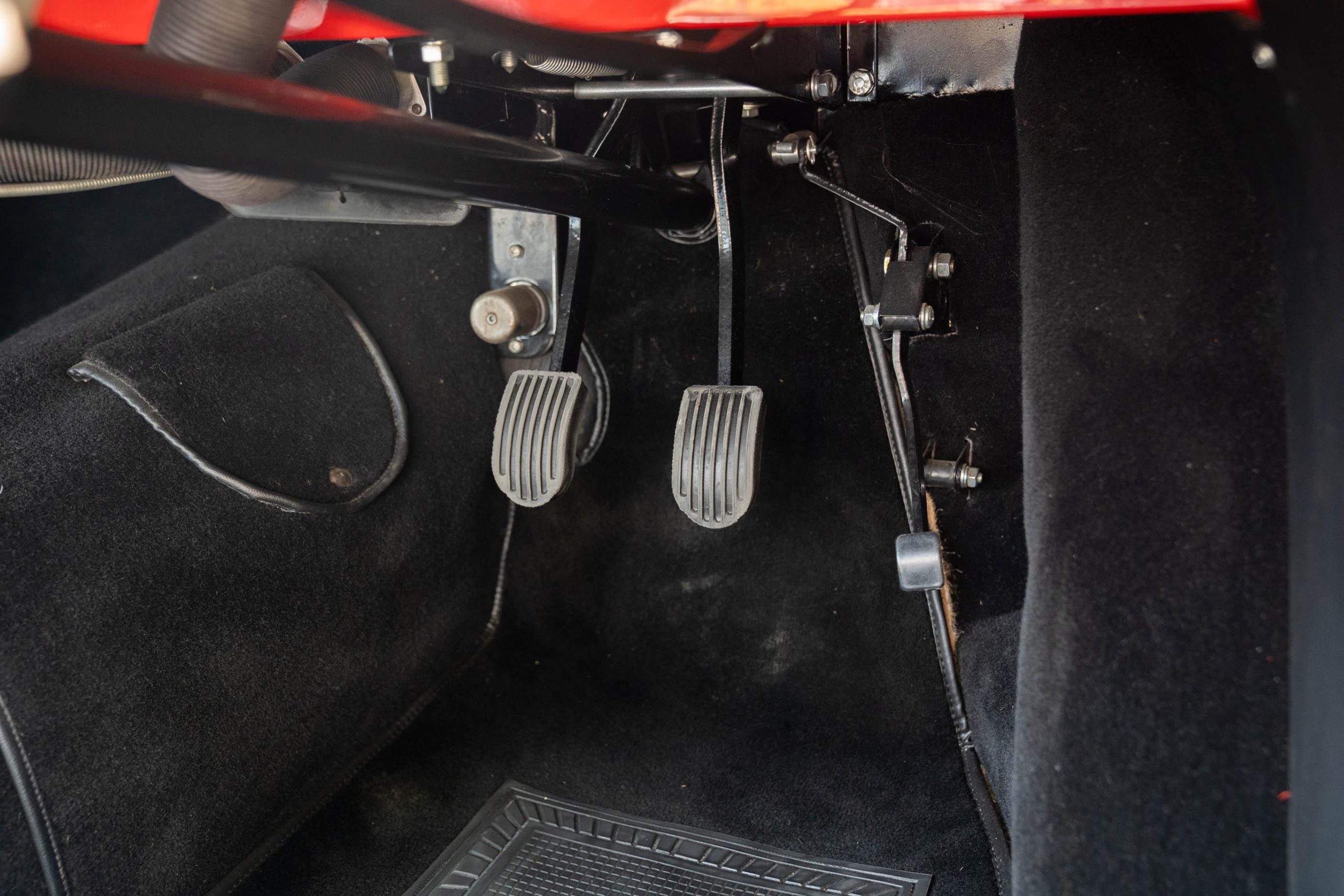
Dip switches
By far the most-requested old-car feature on our last list was the dip switch – the floor-mounted button used to switch between main beam and dipped beam with a quick prod of the toes, and which seemingly went extinct some time between the 1970s and 1980s, never to be seen again.
Unlike some other old features that have since become extinct, it’s difficult to know why exactly the dip switch vanished from use. It still seems like a thoroughly sensible idea, given it allows drivers to keep their hands on the wheel at all times, and that your left foot, even in a manual car, doesn’t tend to be doing much during the majority of driving.
Perhaps it was rationalised into the column stalk by one manufacturer and all the others simply chose to follow suit – it was certainly more popular on British cars than it ever was on say, German or French ones, and as the British car industry declined through the 1970s, perhaps the dip switch went with it. If nothing else, we rather miss that tactile click felt through the sole of your shoe.

Analogue Dials
Last time round we included “clear instruments” among our most-missed features but we’re going a step further this time because much like physical buttons further down, dial design has only got worse in the last four years.
Not everything needs the ornate and beautiful cluster you’ll find in a Bugatti Tourbillon, but the Bugatti’s most prominent interior design feature is a big middle finger to the industry trend towards replacing analogue instruments with screens. It is very vocally demonstrating that the mechanical still matters, and is worth the extra money.
Let’s face it, whatever fancy graphics you put on a screen, your fancy six or seven-figure supercar or opulent S-Class basically has an instrument cluster no more desirable than that of a £15k Dacia Spring. If that’s the image you want your car to project, then so be it, but we won’t be surprised when high-end manufacturers begin installing proper dials again to differentiate themselves from the bland screens of their competitors.

Round Steering Wheels
It would be patently silly if your car’s road wheels were anything but round, and if you’ve ever whacked a pothole hard enough to bend a rim, you’ll know the downsides of when a wheel isn’t correctly wheel-shaped. Somehow though, car designers seem to think the wheel with which you steer the car is fair game for faffing with.
Now not everything needs a round wheel, granted. F1 cars and dragsters put cockpit space at a premium and their drivers rarely need to turn the wheel far, so a more yoke-shaped device is fine. But a squared-off wheel in a family car, which might need to be parked or navigate Tesco’s car park, is just a nuisance.
Tellingly, the likes of Porsche, Mazda, and until very recently BMW in its M cars have all persisted with a completely round wheel, and all market their cars as being more driver-focused, but actually end up being nicer to use day-to-day too as a result. But flat-bottomed wheels, and increasingly hexagonal ones, are becoming increasingly prevalent.

Short Dashboards
One of the underrated pleasures of getting behind the wheel of an old Beetle, or a Saab 900, is the unique view of the world that comes from having your nose pretty much pressed up against the windscreen, especially with the wraparound feel you get from the Saab or later Super Beetles.
Key to that is a dashboard that’s seemingly just a few inches deep and relatively upright glass. The combination confers excellent visibility, because even with thicker screen pillars it’s easier to peer around them if you’re close, and equally in poor weather it’s easier to focus past rain droplets than if the screen is miles away. You can also give the screen a quick wipe with a cloth if you need to.
Safety (because you’re further from the front of the car) and aerodynamics (for a more raked screen) mean there’s no such joy in most modern vehicles – a dash top like an aircraft carrier deck means it now feels like you’re driving from the back seats, have to lean around steeply raked pillars, and most of the screen is totally out of reach. And it makes even sports cars feel like MPVs.

Dipsticks
That’s not an insult to our fine readers: no, we’re asking for the return of a slim bit of metal you can pull out of your engine to check its oil level. Seems like a simple request, but one that a surprising number of cars no longer grant you.
In those vehicles the reason for its absence is that the tech in modern cars is now smart enough, in theory at least, to monitor the quality and level of oil with reasonable accuracy, and warn you if it needs changing or is a little too low. You’ll get a message on the dash letting you know your car needs a service, and that’s that.
We know that a huge number of motorists never check their oil anyway, but some of us do, and along with checking tyre pressures it’s probably one of the simplest yet also most effective ways of ensuring your car is in good health. And a dipstick is still the best way of doing that, even if it’s just for peace of mind.

Narrowness
As much a concept as a feature, but it probably hasn’t escaped you that cars are wider than they used to be – all you need to do is squeeze one into a parking space, or your garage, to feel the difference: there’s not as much room around cars as there used to be.
While length can be problematic for parking too, width is arguably more an issue in most everyday situations. It renders every road narrower, a problem that compounds with other traffic, and further when cars are parked alongside the road. London streets that used to be free-flowing when lined with Minis and Beetles are now choked by lines of SUVs whole feet wider.
Some of the width has come from the much thicker body sides needed for side impact regulations, though extra equipment, sound deadening, and wider cabins also play a part. The upshot is that while a 1980s family car like a Peugeot 405 was 1.7m wide sans mirrors, its modern equivalent is another 15cm broader, while the ubiquitous Tesla Model Y is 1.9m, and big SUVs like the BMW X5 are now more than 2m wide. Breathe in…
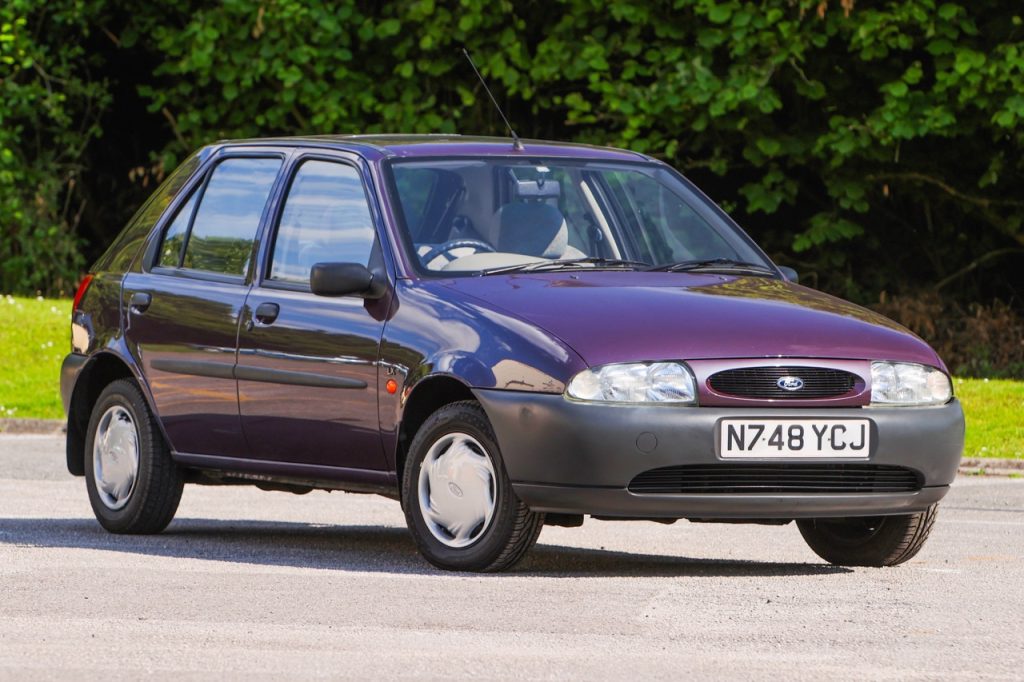
Unpainted Bumpers
When Dacia arrived in the UK in 2013, a lot of attention focused on the bare-bones Access versions of both the Sandero supermini and Duster SUV, which proudly wore white paintwork and big, unpainted plastic bumpers – a look absent from most modern cars for well over a decade before they hit the road.
Naturally, customers snubbed these versions in huge numbers and bought fancier trims instead with colour-coded bumpers, but while not everyone is keen on the unpainted aesthetic, they still make enormous sense for vehicles that might live a bit of a rough and tumble life – be that city use in a supermini, or some light off-roading in an SUV.
When done well, it can even enhance the car’s styling – we still reckon the mk1 Ford Ka looked best in original form with unpainted bumpers, and they shrug off scrapes far better than the obvious parking damage left on painted equivalents. It works on more prestigious models too though; we’re quite partial to the most basic E36 BMW 3 Series variants, which look rather handsome with the wheel trims and black bumpers combo.
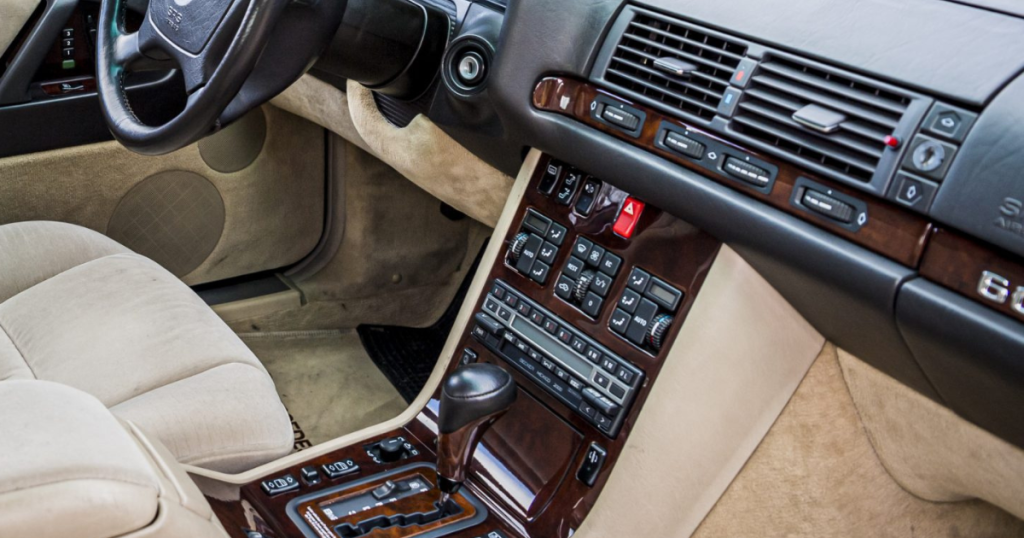
Obvious Hazard Light Switches
It makes sense for a button you might need to use in an emergency to be incredibly obvious and in an easily-accessible place, yet over the last couple of decades, the humble but important hazard warning lights button has in most cars, for some reason, turned from a prominently-positioned bright-red lozenge on the dashboard or steering column, to a button no more obvious than the air recirculation or heated rear screen controls.
While your author does hop in and out of a lot of different cars, so few controls are ever exactly where I left them, that shouldn’t really matter when it comes to a safety-related item. You wouldn’t hide the headlight switch in the glovebox or put the brake pedal on the side of your seat, so why has the button you might need during a breakdown or when motorway traffic rapidly slows ahead become a game of hide and seek?
No doubt aesthetics plays a part, car interior designers aghast at the notion of placing a bright red button in your line of sight; ironic, when most give you ten inches of glowing screen instead. But even those that put the button somewhere useful (Skoda, Hyundai, Honda and more stick it between the central dashboard vents, which is easy to find) now paint it black, with just a small red triangle to denote its presence. Give us the bright red lozenge style any day.

Please, for the love of all that’s holy, actual buttons
We can hardly believe it’s come to this, but since our last list just four years ago, where we were already asking for a return to switches, industry momentum has carried this simplest of controls further out of reach, almost literally. Just a handful of manufacturers before were making the unwise transition to cram as many controls as possible into black shiny rectangles but now the sensible ones seem like a minority.
Tesla remains one of the worst offenders but the likes of Ferrari binning tactile controls for touch-sensitivity is arguably even worse. The Italian manufacturer is already back-tracking, ditching its touch-sensitive steering wheel controls on future models, but a whole generation of its cars have been needlessly hobbled by a deeply unsatisfying and distracting user interface.
Get into one of the few holdouts which does things properly – a Skoda Superb, the new Renault 5, or of course plenty of older cars – and it’s hard to believe how much easier it is to operate basic functions with little to no need to glance down to the button, knob, or switch in question.
Which classic car features do you miss the most? Let us know in the comments below.
Classic car insurance from Hagerty
Keep your classic on the road with expert classic car insurance built by car lovers, for car lovers. Rated ‘Excellent’ on TrustPilot.
Experience More Car Nostalgia
Can the Crossover Really Be Cool? The 90s Say Yes
Wheels of Fortune: Modern Classic Rims to Remember
The Full English: Austin Allegro
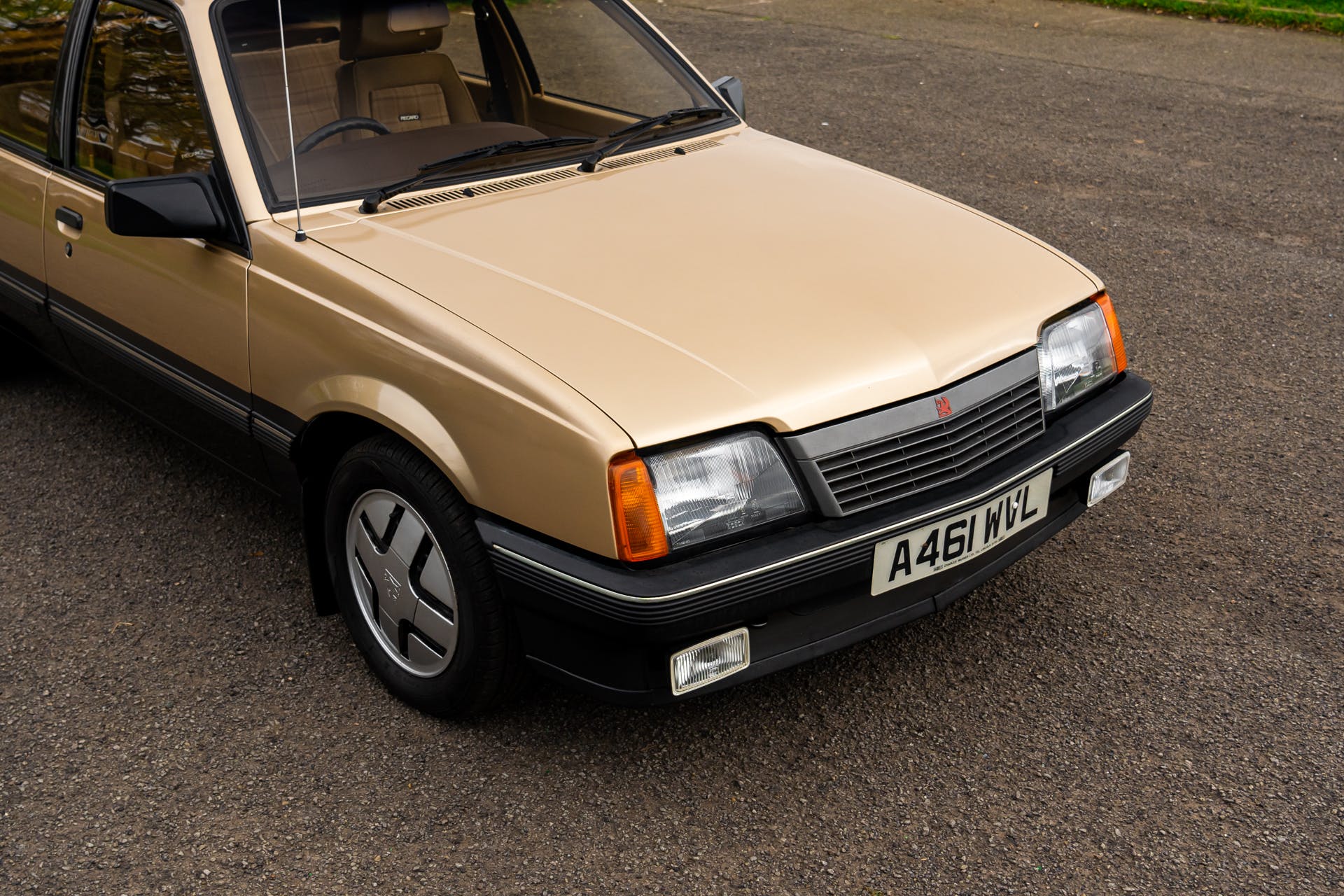


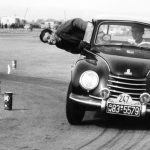






Mines got most of these and it’s a 2020 car. I felt it was the last gasp for analogue features and certainly haven’t regretted buying it. Hoping it lasts as long as I do.
Oil pressure gauge instead of a warning light. Also a starting handle for emergencies as cars with catalytic converters are not supposed to be tow started or push started as a build up of unburnt fuel can damage the cats.
One word solution to most of these: Dacia!
I agree , and when you lifted the bonnet on an older car pre 1990 you actually had room to put your hands down to work on the car , now it’s all plastic panels .
Also another moan is the fuel cap release some models hide the release button and it’s coloured black , what was wrong with the little lever below the seat that worked perfect ? . Also a lot of modern cars the A pillar is that wide now it makes it difficult to see if Ur turning left or right as it blocks the view.. simple is best ..
Re the loss of the floor mounted dipswitch; possibly the mk3 Cortina is the culprit. It had a floor mounted wash/wipe switch.
Old style bonnet support replaced with two hydrolic arms ( I dont feel safe had one fail on me), no spare tyre replaced with some horrible gunk that tyre fitters hate.
I am old school do most things for myself not anymore modern engines you need a degree in computer science to even look at it
Hello Hagerty, how about we go back to an easy find bonnet catch in the cabin? I don’t tend to drive different vehicles now but if I do the bonnet catch will be in a completely different place to any other I’ve come across.
Cd player please not interested in apple car play or similar thanks very much
Surely the most obvious one of the lot is the good old handbrake, imagine having to switch on the electronic parking brake at 70mph the car would probably spin like a Sycamore seed even though they say it shouldn’t. I have just experienced total brake failure on a 26k mls 5 years old BMW l series but luckily got away with it.
I miss the good old carburetor, probably not the best choice, but way better in my eyes that fuel injectors.
Ignition barrel with key start. Sick of trying to find keys in my car or on my person.
We want far less electronic gadgetry and more mechanical devices that the average bloke can fix if it goes wrong. Electronics, once believed to enhance reliability, are in fact the leading source of malfunctions in a vehicle.
Being able to wash THEN wipe. If there’s no water, wipers smearing the dirt just makes it worse.
One very serious admition from most new cars is a SPARE TYRE!
Hand brake.
Not an automated hand brake
Drip rail mouldings! Please. They’re not found on many cars past the 70’s, but they sure stopped your neck being drenched when getting in and out of the car before you could open the brolley.
Yes CD player gone from my 2016 Clio…..don’t mind my digital speedo….could never read old speedo in some Fords.
Bring back analog as much as possible, especially on the main (hopefully small) dash! Dials, buttons, & switches should abound (so long as every feature is necessary)!
Much safer anyway, since the tactile feedback enables/aids muscle memory, so you don’t have to look as much as you do with a screen.
By all means, keep improving the engine/under the bonnet tech, but keep the interior tech strictly old school!
CD player missing in my 2024 MX5. I had one in my 2016 model but now sadly gone. I’m old school and like to play my CDs.
I have a 1986 toyota carina 11 38 years old I’ve had it 25 years
never let me down all old school easy to get to the engine do most of the maintenance myself, great drive,
Spare wheel, wheel brace and jack. Vital. I had a loan car when asked to do the eulogy at a funeral, 200 miles away. No spare, so had to book a hotel In taxi range. If any of your journeys are time critical, you MUST carry a spare!
Electronics are cheaper to produce than mechanical controls etc. I drive a 70 year old Austin A30. Everything is mechanical, reliable and fixable!
I drive a 2021 subaru xv or cross tech in some countries,it’s got all the things mentioned in article and a CD player to boot.Go Subaru
I miss the old wiper adjustment settings in comparison to the sensor wipers which are too slow in starting and too slow in stopping when the screen has dried. Lack of a spare tyre is a big issue especially as I am a taxi driver
I agree with most of the items mentioned in the article, but I do not really miss the floor mounted dip switch. I remember often getting caught out when changing gear with the clutch pedal and wanting to dip the headlights at the same time!
This article could be renamed “10 Best Reasons To Love Classic Cars.” My two main gripes are the reliance on touch screens and the aircraft carrier length of dashboards. Yes, a Beetle is perhaps a bit too “in your face” — but comparing our current 2016 Honda Fit (Jazz in the UK) to our previous 2008 the difference was remarkable. As for the dip switch, my father had a 1970 Fiat (new) and that had the column stalk dip — which we thought was amazing (along with a stalk to control the wipers). Long live analog!!!
Ignition key. Ok, it’s a pain having to look for your keys to open and then start your car but not having an ignition key makes the car easier to steal. Also I know of several people who have had problems with keyless ignition not letting them start the car. One lady I know collected her car from the garage after it’s MoT and forgot to get the key fob from the mechanic and drove all the way home, switched it off to open the garage door and then couldn’t start it. The garage guy brought her the key fob on his way home. That was me. Doh
Currently driving a rental, pending write-off payment (not our fault): Corsa. It has a real handbrake lever, praise be. BUT the other day the auto headlights had somehow got turned off. How to switch them on manually, or restore auto? No stalk control, no labelled switch… turns out you have to go through menus on the touchscreen! Hate touchscreens for fundamental controls. You can’t operate by feel, you have to take your eyes off the road, often for dangerously long times. How do such unsafe systems get passed as fit for purpose?
The cigarette lighters and the small vent windows on the drivers and passenger windows
What about the now extinct CD player?
How about bringing back Wing Windows on the front doors . They worked great & helped allot during the summer, especially when you had no A/C in the car.
Some of the items that are the same issues that are the reasons for so many recalls and slumping sales. Smart buyers are looking for older models for there known reliability. I. E. 1. INSTRUMENTS PANEL ELECTRONICS 2. ELECTRONIC TRANSMISSION COMMUNICATIONS 3. THE BIG PROBLEMS GM HAS WITH THE NEWER LS ENGINES. AND, LETS NOT FORGET ALL OF THE A.I. ISSUES THATS COMING FOR EVERYTHING AND EVERYONE. Wanting instant gratification and no effort on your part is detrimental on so many fronts.
All perfect examples of why I refuse to own anything newer than 1980. I’m very content with my 66 el Camino/ 65 vw bug / 73 Land Cruiser/ 34 Chevy 3 window/ 77 rd / 51 WL. You can’t go wrong with any of these.
I agree with mostly everything on this list with two exceptions. 1st is the black plastic bumpers. Yuk! I’ve always hated them on almost every car. There could be a few exceptions but I would hate for that to become common again. What I would like, is real chrome metal bumpers again! I cannot remember a car that ever went from chrome metal bumpers to plastic and looked better.
The 2nd is a shift lever. I actually am pretty much on board with you on that but my 2024 Ram has a dial. When I first saw it I thought it was a terrible idea. Now that I’ve been living with it for a year or two, I actually quite like it. If you add in steering wheel paddle shifters there really isn’t much need for a lever. Whatever replaces the shifter has to remain simple to use and access. I’ve seen new cars with electronic shifters that are just ridiculously complicated. Why?
Never should have got rid of side vent windows and the old pull lever floor vents.
Love them on my 68 buick wildcat custom
Amber coloured Hazard flashing lights for fog or snow squalls. Today’s taillights are becoming more entirely red which cannot be seen in fog and hence a hazard themselves now.
One comment: While driving on I-95 in my 2015 Impala I wanted to warn folks about stopped traffic ahead, and hit the ignition button instead of the hazard flashers and the car shut off at 70mph. The flasher switch is one inch above the ignition. Try stepping on the brake in neutral to restart when there’s a tractor trailer on your bumper.
One thing that has caused way too many accidents is putting a computer screen in the middle of your dash.
I live in Vermont and we have two lane roads. Frequently people are coming across the yellow line looking at the dashboard trying to fuss with it. It’s worse than cell phones.
I know this isn’t something that you wish were still used but I wish it would go away for safety sakes.
I want the true air vent back open it and fresh air comes in from outside or bring back the little triangle window that opens to direct air in on you.
Well, since I’ve had a 76 MG Midget 1500 since it was brand new ( 1930’s tech in a 1970’s car) most things are as they were then: very basic.
One thing I do miss overall in both my old British cars and my American cars after the 1980s are self-supporting, spring-loaded engine bay and trunk lids, How cheap can you be car makers?!
The triangular vent window. I have them on my 51 F-3 Pickup. With those and the vent at the back of the hood just under the windshield, it’s just like air conditioning!
CHROME! Wheels, bumpers, door handles…..what is with black wheels…..just look dirty all the time?
Happily my ‘51 Chev pickup has those things. But I must admit I had to add hazard light switch, but was easy to do with the added turn signal, original had neither.
I couldn’t agree more with the features in the article, all of them! Enjoyed the article and the comments very much!
Since I only drive older cars (my youngest one is a 2000 model), I still have all these missed features! And I will not change to a digitized car in the future – why should I?
Swivel seats to get in and out. Twist the seat instead of our back!
OH GOOD GRIEF!! I SO AGREE!!! I miss the ease of setting the a/c or heater while driving…and I recently had a HORRIBLE experience with a rental Chevy Traverse ….good lord!! who designed the inside of that monster!! I was so surprised, then deeply offended when my seat buzzed my butt because the car had a warning alert that you might possibly be too close to the car in front of you !!!!!!! It was most uncomfortable and a bit shocking the first time it happened, since I didn’t know that was a feature…I looked up the manual on the internet while in the Hotel room to shut the stupid buzzer off…GOD!!! Whose idea was that??? And the touch screen features nearly caused me accidents several times!!!!!!!!!!!!! I love my ’57 T-bird…she has all the oldies but goodies except for curb feelers…..hmmm…bet I can buy those somewhere!!
The keyless ignition fob can do unintended functions without notice,I.e., like locking doors, sound the horn, etc. . Touch screens are overly complex, to where it takes much experimentation and stopping the car, to perform the simplest of functions. A paper copy of the owner’s manual that pertains to your make /model car or truck that describes how each and ALL functions work. Finally, eliminate the cover panels that are installed under the engine/transmission.
Pull out headlight switches that turn to increase dash light brightness. Newer cars have sensors that turn dash lights off in daylight. Well, I still like dash lights on in daylight.
Switches and buttons, instead of a computer screen. It is a distraction from driving to have to look at a screen, instead of reaching to a button that I know where it is from memory. Besides, when the switch goes out, its $25 for the part, versus a few thousand to get the feature working again.
Side vent windows.
Couldn’t agree more about the ‘switches/knobs,’ I hate driving my wife’s X3, I have no idea how to adjust any of the climate controls, and don’t really want to know, as little as I drive it. Also, on the foot toggle switches, I have a 1965 Impala, I was driving with my 39 year old nephew a while back and used it, he had no idea about those, I still love ’em.
One advantage of underwood dipstick is the requirement to open the hood to check the oil. While there, you might notice low coolant, or a leaking coolant hose, some odd streaking on the bottom of the hood from the engine, burned wire, corroding battery terminals or other items requiring routine maintenance. Thanks for the thought provoking article.
One advantage of an under-hood dipstick is the requirement to open the hood to check the oil. While there, you might notice low coolant, or a leaking coolant hose, some odd streaking on the bottom of the hood from the engine, burned wire, corroding battery terminals or other items requiring routine maintenance. Thanks for the thought provoking article.
A proper handbrake is so much better than an EPB switch – especially in a manual car. You have so much more control in traffic and hill starts when you need to judge the clutch bite point.
I prefer real gauges, dashboard buttons, switches, I like the tactile feeling. Today I feel like I’m behind the wheel of an IPAD. There’s way too much emphasis placed on “infotainment systems” folks, focus on the driving, that’s what it’s all about. That’s where the real joy comes from anyway, right?